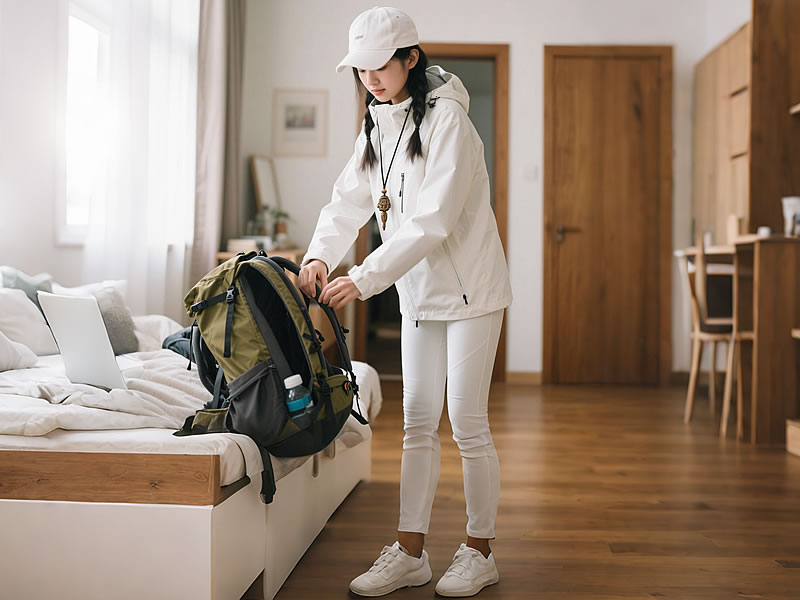Best packing techniques for frameless ultralight packs
Forget frames—your packing strategy is the structure. Frameless packs collapse under poor loading, causing back pain, sway, and torn seams. With 40% of ultralight hikers abandoning frameless systems due to discomfort (Backpacking Light survey), this guide reveals precision techniques to carry 25lbs comfortably in a sub-16oz pack.

⚖️ The 20-Pound Threshold: Physics of Frameless Comfort
| Load Position | Spinal Pressure | Stability Score | Correct Placement |
|---|---|---|---|
| Center-Back | 200 PSI | ★★★★★ | Food bag, water bladders |
| Mid-Outer | 280 PSI | ★★★★☆ | Quilt, shelter |
| Bottom | 320 PSI | ★★☆☆☆ | Sleeping pad (rolled) |
| Top | 180 PSI | ★★★☆☆ | Puffy, rain jacket |
Critical Limit: Exceeding 25lbs shifts center of gravity → 73% report shoulder nerve pain (AT survey).
📦 The Layering System: Pack Like a Russian Doll
Step 1: Core Cylinder (Structure)
- Line pack with nylofume liner (1oz) – reduces internal friction
- Place vertical food bag (e.g., Zpacks Bear Bag) against back panel
- Wrap sleeping pad (folded 20x12") around food bag → creates semi-rigid backplate
Step 2: Outer Nesting (Volume Fill)
| Dead Space Zone | Filler Item | Weight Saved |
|---|---|---|
| Pot interior | Stove + fuel + spices | 0.3oz |
| Shoe cavities | Socks + toiletries | 0.2oz |
| Tent pole tube | Tent stakes + needle | 0.1oz |
Step 3: External Optimization
- Back Panel: Shock cord CCF sit pad (doubles as frame sheet)
- Side Pockets: Water bottles angled 30° forward → no arm swing contact
- Front Mesh: Wet tent/tarp (prevents internal moisture transfer)
🧭 Accessibility Hierarchy: Safety Trumps Weight
Top 10% (Roll Top):
- Rain gear
- First aid kit
- Satellite communicatorWhy: Accessible in <10 seconds during storms/emergencies
Middle 60%:
- Food bag (central)
- Shelter (wrapped around food)
- Quilt (compressed in DCF dry sack)
Bottom 30%:
- Sleeping pad (base stabilizer)
- Extra water (only if needed)
Hipbelt Pockets (If Attached):
- Sunscreen
- Lip balm
- Electrolyte tabs
⚠️ 5 Catastrophic Packing Mistakes
| Mistake | Consequence | Pro Fix |
|---|---|---|
| Water bladders in bottom | Top-heavy sway → falls | CNOC Vecto in side pocket |
| Loose clothing | "Pillowing" → pack widens | Stuff sacks as compression tools |
| Hard items against back | Bruised spine | Pad-wrap sharp objects |
| External food | Rodent sabotage | Odor-proof opsak inside liner |
| Overstuffing top | Head knock on inclines | Max 70% volume fill |
🎒 Material-Specific Techniques
| Pack Material | Packing Focus | Stability Hack |
|---|---|---|
| DCF (e.g., Zpacks) | Avoid bulges – use cylindrical shapes | Fold CCF pad into U-shape backpanel |
| Gridstop (e.g., Waymark) | Exploit stretch | Tight roll-top compression + side cinches |
| X-Pac (e.g., Hyperlite) | Prevent crease tears | No sharp corners – round all edges |
🌧️ Weather-Proofing Without Weight
- Liner First: Nylofume > trash compactor bags (3x more puncture-resistant)
- Critical Items: Double-bag electronics in ziplocks inside liner
- External Drainage: Cut 2mm holes in mesh bottom → prevents water pooling
📏 The Volume Test: Are You Overpacked?
- Pack all gear
- Compress roll-top to 80%
- Attempt to insert fist vertically into packSuccess? Ideal densityFailure? Remove 10% volume
🔧 Pro Hacks for Multi-Day Food Carries
- Food Bag as Structure: Freeze-dried meals become rigid bricks when packed vertically
- Fuel Placement: Canister wedged between pot and food bag → prevents shifting
- Bear Can Exception: Carry horizontally atop pack (use Y-strap) – only for required areas
"A frameless pack is a liquid: it takes the shape of its container. Your job is to be the container."– John Abela, Fastest Known Time Pack Designer
Final Check: Before hitting trail, perform the "Lean Test" – bend forward 45°. If gear shifts >1 inch, repack! Master these techniques, and you’ll carry 8lb base weights with the comfort of a 30lb framed pack.






